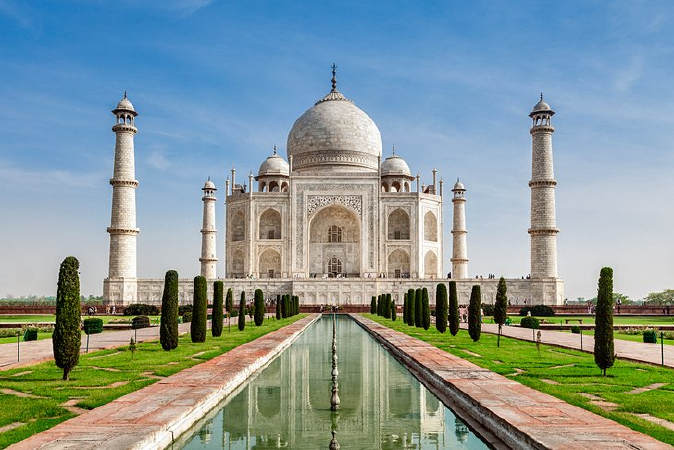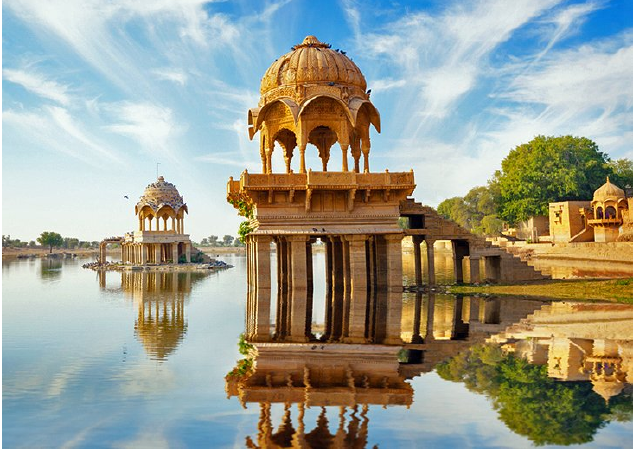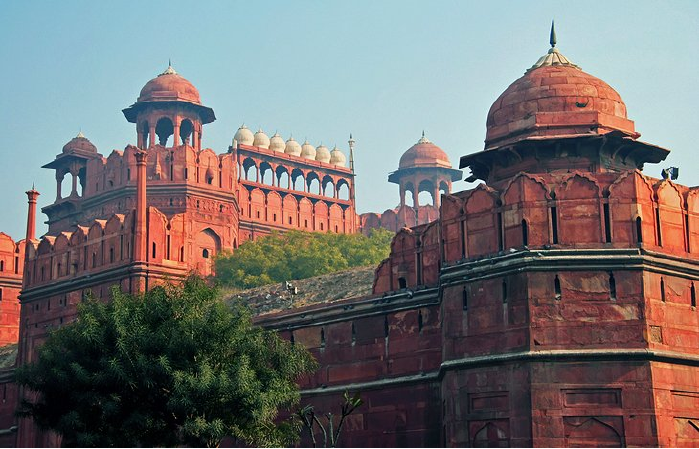Top 10 tourist attractions not to be missed in India
India is a vibrant country with a diverse mix of traditional and modern cultures. Coming to India, you can immerse yourself in sun-drenched beaches, visit national parks or explore interesting wildlife reserves. From massive forts to serene beaches to stately mosques, visitors to India will be greeted with a wealth of spiritual, cultural and historical treasures. Traveling to India is definitely an option worth considering, let's explore the list of Top 10 tourist attractions not to be missed in India.
1
Taj Mahal, Agra

Perhaps India's most recognizable building, the Taj Mahal is also the world's most famous demonstration of the power of love. Named after Mumtaz Mahal, favorite wife of Emperor Shah Jahan, this most beautiful mausoleum was started construction after her death in 1631 and took 20,000 workers until 1648 to complete.
Incorporating many elements of Islamic design including domes, minarets, onion domes and black calligraphy inlaid around the entrance, the Taj Mahal is largely constructed of white marble. Adding to its splendor are intricately inlaid floral motifs and precious and semi-precious stones such as sapphires, sapphires, diamonds and mother-of-pearl.
The best time to visit is at dawn or dusk when the atmosphere is brilliantly changed by the changing light. If possible, try to see the reflection of the Taj Mahal from the far bank of the Yamuna River - it makes for a memorable (and safe) selfie.
2
The Holy Land of Varanasi

Dating back to the 8th century BC, Varanasi is one of the oldest still inhabited cities in the world. A major pilgrimage center for Hindus, this holy city has long been associated with the mighty Ganges River, one of the faith's most important religious symbols.
Varanasi offers many reasons to visit, especially the chance to explore the Old Town adjacent to the Ganges River, where you'll find Kashi Vishwanath Temple, built in 1780. New Vishwanath Temple with seven separate temples is also very interesting.
Bathing in the Ganges is of great importance to Hindus, and many sites known as "ghats" have stairs leading to a stream where devotees bathe before praying. The largest are the Dasashvamedh Ghat and the Assi Ghat. The latter, at the confluence of the Ganges and Asi rivers, is considered particularly sacred.
Also worth seeing is Banaras Hindu University, founded in 1917 and famous for its massive library of over a million books and the excellent Bharat Kala Bhavan museum with its superb collections of miniature paintings. , sculptures, palm leaf manuscripts and local history exhibits.
3
Harmandir Sahib: Amritsar's Golden Temple

Founded in 1577 by Ram Das, Amritsar is an important center of Sikh history and culture. The main attraction here is the Harmandir Sahib, which opened in 1604 and is still commonly known as the Golden Temple because of its beautiful gold decoration.
The holiest of India's many Sikh temples (it also attracts many Hindus and other followers), the temple is built in a mixed Hindu and Buddhist style. Islam. Its marble bottom features ornate floral and animal motifs, while the large golden dome represents the lotus, a symbol of purity for Sikhs.
In addition to its splendid design, visitors are equally impressed by the temple's spiritual atmosphere, an effect enhanced by the constant prayers chanted from the holy book of Sikhism and delivered. throughout the complex.
Part of the overall experience - and visitors are welcome to join - is the chance to enjoy one of the 50,000 free meals the attraction serves to visitors each day.
4
Golden City: Jaisalmer

Named for the yellow sandstone used in most of its buildings, Jaisalmer's Golden City is an oasis of splendid ancient architecture rising from the dunes of the Thar desert. Once a strategic outpost, today the city is filled with splendid old mansions; palatial gates; and the massive Jaisalmer Fort, also known as the Golden Fort, a fearsome 12th-century structure perched high above the town.
In addition to its beautiful palaces, temples, and old houses, the fort has 99 bastions along with large gates leading to the main courtyard, where you'll find the seven-story Maharaja Palace. Started in the early 1500s and added by successive rulers until the 19th century, the palace offers areas open to the public, including beautifully decorated areas in brick. from Italy and China, and intricately carved stone doors.
There are also several Jain temples dating from the 12th to 16th centuries, each decorated with marble and fine sandstone images, palm leaf manuscripts, and brightly painted ceilings. Be sure to check out the well-preserved 1,000-year-old library, Gyan Bhandar, with its many 16th-century manuscripts and artifacts.
5
Red Fort, New Delhi

Built by Shah Jahan in 1648 as the seat of Mughal power - a role it maintained until 1857 - New Delhi's magnificent crescent-shaped Red Fort, named for its red sandstone Beautiful buildings were used in its construction, covering a large area of more than two square kilometers, all surrounded by a large moat.
Highlights include its two largest gates: the impressive Lahore Gate (the main entrance to the fort) and the ornate Delhi Gate, once used by the emperor for palanquin ceremonies.
Part of the fun of a visit is exploring Chatta Chowk, a 17th-century covered market that sells everything from jewelry to silk garments as well as souvenirs and food. While you can explore the fort on your own, guided tours are offered and provide fascinating insight into the life and times of the Shah, including a look into the Reception Hall beautiful white marble public (Diwan-i-Am), where he received his subjects.
Suitable for you
02-07-2023 cookie
02-07-2023 cookie
01-07-2023 cookie
01-07-2023 cookie
01-07-2023 cookie
